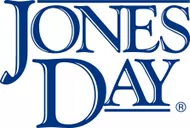- within Criminal Law topic(s)
A Review of 2024 Labor & Employment Legislation in California
The 2024 California legislative session saw the passage of a number of new and important labor and employment laws.
In June 2024 and effective immediately as emergency legislation, California enacted the first significant reforms to the Private Attorneys General Act, or PAGA, in more than a decade.
Springboarding off of the workplace violence legislation effective in 2024, the Legislature continued to expand the law to protect victims of violence, including family members who are victims of violence, and expanded the definition of a "qualifying act of violence" for the purposes of protective leave.
Another key area for the Legislature is employer speech. Likely influenced by the current political climate, SB 399 seeks to end captive audience meetings during work hours, and prohibits employers from subjecting, or threatening to subject, employees to discrimination, retaliation, or adverse action because an employee declines to attend employer meetings intended to share the employer's opinion on "religious" or "political" matters.
Anti-discrimination initiatives were also at the forefront of California law. Beginning January 1, 2025, under SB 1100 and with limited exceptions, employers may not include in job postings that applicants are required to have a driver's license. Separately, under SB 1137, where an individual claims multiple bases of discrimination, it may be necessary to determine whether the discrimination occurred based on a combination of protected characteristics rather than each characteristic in isolation.
Other new and amended statutes will require employers to revisit company policies and litigation strategies.
PAGA REFORM
SB 92/AB 2288
California's Private Attorneys General Act ("PAGA") was the target of a November 2024 ballot initiative that, if passed, would have repealed the Act in response to perceived abuses and frivolous lawsuits. In a negotiated compromise brokered by California Governor Gavin Newsom and legislative leaders, business and labor groups announced on June 18, 2024, that a deal had been reached to pass legislation reforming PAGA and to withdraw the proposed initiative from the ballot. Read our Commentary, "California Enacts First Significant Reforms to PAGA in More Than a Decade," for a more detailed discussion of the amendments
SUMMARY OF COMPLIANCE, CURE, AND EEC PROVISIONS OF PAGA REFORM 2024
Reduction of Penalties for Taking "All Reasonable Steps" To Be in Compliance
Timing of Employer's Compliance Steps. If "all reasonable steps" for compliance occurred (as to all provisions identified in the notice) prior to receiving the notice of violation required by Section 2699.3, or prior to receiving a request for records pursuant to Section 226, 432, or 1198.5 from the aggrieved employee or the employee's counsel, then the civil penalty that may be recovered will not be more than 15% of the penalty sought. See Cal. Lab. Code § 2699(g)(1).
If the employer takes those steps to prospectively be in compliance with all provisions alleged in the notice within 60 days after receiving notice, penalties are still reduced, but only to 30% of the total penalty sought. See § 2699(h)(1).
What Actions May Constitute "All Reasonable Steps"? "All reasonable steps" may include, but are not limited to, any of the following: (i) conducted periodic payroll audits (or, if notice has been filed, conducted an audit of the alleged violations) and took action in response to the results of the audit; (ii) disseminated lawful written policies (and, if a notice has been filed, disseminated lawful written policies as to the alleged violation); (iii) trained supervisors on applicable Labor Code and wage order compliance; or (iv) took appropriate corrective action with regard to supervisors. See § 2699(g)(2).
Whether the employer's conduct was reasonable will be evaluated by the totality of the circumstances and take into consideration the size and resources available to the employer, and the nature, severity, and duration of the alleged violations. See § 2699(g)(2). The existence of a violation, despite the steps taken, is insufficient to establish that an employer failed to take all reasonable steps. See § 2699(g)(2).
Cure Process and Requirements
Cure Process for Employers with <100 Employees. Effective October 1, 2024, employers that employ fewer than 100 employees during the period covered by the notice may submit to the Labor & Workforce Development Agency ("LWDA"), within 33 days of the postmark date of the PAGA notice, a confidential proposal to cure one or more of the alleged violations. See § 2699.3(c)(2)(A). The LWDA may set a conference to evaluate the sufficiency of the proposed cure, and the employer must complete the cure no more than 45 days after the conference as well as submit sworn notice to the agency and the employee that the cure is completed. See § 2699.3(c)(2)(B) (C). This notice must be accompanied by a payroll audit and check register if the violation involves a payment obligation and must also include any information the parties deemed necessary to determine the sufficiency of the cure. See § 2699.3(c)(2)(B). If the cure includes the payment of unpaid wages, the agency must also determine at the conference whether to request that the employer pay the proposed cure amount, including any wages and liquidated damages due and 7% interest, into escrow or will provide such other form of security as the agency deems suitable. See § 2699.3(c)(2)(B)
If the LWDA determines that the violation is not cured or does not provide timely notice, the aggrieved employee may file a PAGA lawsuit. However, the employer is entitled to file a request for a stay and early evaluation conference, as explained in "Early Neutral Evaluation Process," below. See § 2699.3(c)(2) (B). If the LWDA determines that the alleged violation has been cured, the aggrieved employee may not proceed with a civil action. However, if the aggrieved employee disagrees with the cure determination, he or she may appeal that determination to the superior court. See § 2699.3(c)(2)(D).
Cure Process for Only Violations of Cal. Lab. Code § 226
Effective October 1, 2024, employers of any size may cure violations of Labor Code Section 226 (wage statement violations). See § 2699.3(c)(3). An employer seeking to cure only violations of Labor Code Section 226 must, within 33 days of the postmark date of the PAGA notice, give written notice by certified mail to the aggrieved employee or representative and by online filing to the LWDA that the alleged violation has been cured, including a description of actions taken, and no PAGA action may commence. See § 2699.3(c)(3)(A). If the alleged violation is not cured within the 33-day period, the employee may file a PAGA lawsuit. See § 2699.3(c)(3)(A).
An aggrieved employee may dispute the sufficiency of the cure. See § 2699.3(c)(3)(B). The LWDA will review cure disputes and provide written notice of its decision to the aggrieved employee and the employer. The LWDA may give the employer three additional days to complete the cure. If the LWDA determines that the violation is not cured or does not provide timely notice, the aggrieved employee may file a PAGA lawsuit. See § 2699.3(c)(3)(B).
An employer may not use the cure provisions more than once in a one-year period for the same violations. See § 2699.3(d). No cure or proposal to cure may be deemed an admission of liability by the employer that submitted the proposed cure. See § 2699.3(c)(2)(E). Any cure proposal will be deemed a confidential settlement proposal subject to Section 1152 of the Evidence Code. See § 2699.3(c)(2)(E).
Requirements for Effective Cure. Curing a violation requires: (i) correcting the alleged violation; (ii) compliance with the statute(s) alleged to have been violated; and (iii) making whole each aggrieved employee. See § 2699(d)(1). If an aggrieved employee is owed wages, the cure must include unpaid wages back three years from the notice, 7% interest, any liquidated damages required by statute, and reasonable attorneys' fees and costs. See § 2699(d)(1). An employer seeking to cure wage statement violations of paragraphs (1) to (7), and (9) of Labor Code § 226(a) must provide, at no cost to the employees, fully compliant, itemized wage statements to each aggrieved employee for each pay period of the violation going back three years prior to the PAGA notice date. See § 2699(d)(2) (B). For wage statement violations of Labor Code § 226(a)(8), employer must provide written notice of the correct information to each aggrieved employee. See § 2699(d)(2)(A).
Early Neutral Evaluation Process
For cases filed after October 1, 2024, employers (with at least 100 total employees during the period covered by the PAGA Notice) who are served with a PAGA Summons and Complaint (arising from a PAGA Notice submitted to the LWDA on or after June 19, 2024) have an opportunity to stay proceedings to conduct an Early Evaluation Conference ("EEC"). See § 2699.3(f).
The request for an EEC must be made prior to or at the same time the employer files its responsive pleading or other initial appearance and must also set forth other specific information, including whether the employer intends to cure alleged violations (and if so, which), and identify the allegations it disputes. See § 2699.3(f)(2).
At the same time, the employer should file a request for a stay. If requested, the court will, absent good cause, issue a stay of the proceedings and order an EEC. See § 2699.3(f)(3). Once that occurs, the EEC must take place on "a date as soon as possible from the date of the order but in no event later than 70 days after issuance of the order." See § 2699.3(f)(3)(A).
Who Conducts the EEC? According to Section 2699.3, an EEC is to be conducted by a judge, commissioner, or "such other person who is knowledgeable about and experienced with issues arising under the code who the court shall designate." See § 2699.3(f)(12). This would seem to leave open the possibility that a professional neutral party could be considered for submission to the court for designation. Presumably, this may require a stipulation by the parties.
What Does the Process Look Like? The statute provides that both parties must submit sequential confidential statements, beginning with the defendant, and followed by the plaintiff, which outline their positions, including the claims the defendant seeks to dispute and, again, whether there is an intention to cure. See § 2699.3(f)(3). The plaintiff's statement must then respond with, among other things, a factual basis for each of the alleged violations, the amount of penalties the plaintiff claims for each violation (including a description of how those amounts were calculated), the amount of attorneys' fees and costs to date, a settlement demand, and a basis for accepting or rejecting the employer's proposed plan to cure. See § 2699.3(f)(3)(E).
The statute does not expressly provide discovery mechanisms during this phase, but it seems doubtful a plaintiff would be in a position to prepare this type of informed statement without, at a minimum, an informal exchange of information.
After statements are submitted, the neutral evaluator will then decide whether to accept or reject the defendant's proposed plan to cure. See § 2699.3(f)(4). In doing so, the neutral evaluator must consider, where applicable:
(i) Whether any of the alleged violations occurred and if so, whether the defendant has cured the alleged violations; (ii) the strengths and weaknesses of the plaintiff's claims and the defendant's defenses; (iii) whether the plaintiff's claims, including any claim for penalties or injunctive relief, can be settled in whole or in part; and (iv) whether the parties should share other information that may facilitate early evaluation and resolution of the dispute. See § 2699.3(f)(1)(B).
If the neutral evaluator decides to accept the defendant's proposed plan to cure, the defendant must present evidence within 10 calendar days (or longer, if stipulated by the parties) demonstrating that the cure has been accomplished. See § 2699.3(f)(4). If the defendant fails to timely submit this evidence, the court may terminate the EEC process and any stay. If the neutral evaluator and parties agree that the employer has cured the alleged violations, the parties must jointly submit a statement to the court setting forth the terms of their agreement. See § 2699.3(f)(5). And if there are no more alleged violations that remain in dispute, the matter will be closed. See § 2699.3(f)(6).
What if the Plaintiff Does Not Agree that There Has Been a Cure or the Plan to Cure Is Sufficient? First, if a partial agreement is reached, the remaining issues will proceed to litigation. Second, if the defendant's proposals are rejected outright, the case will go forward in litigation. Third, if the neutral evaluator or the plaintiff do not believe the defendant properly cured the alleged violations pursuant to their plan, the employer can return to the court to seek a determination on the sufficiency of the steps they have taken to cure. See § 2699.3(f)(7)–(9). Regardless of the outcome, the entirety of the EEC process must take place within 30 days unless the parties mutually agree to extend the time. See § 2699.3(f)(11).
Importantly, all statements or evidence submitted for purposes of the EEC and "all discussions" at the EEC "shall be subject to Section 1152 of the Evidence Code." See § 2699.3(f)(10).
Recommendations for Employers: Employers should take steps to understand what these PAGA reforms will mean for future cases and closely monitor PAGA-related legal developments. Employers should continue in their efforts to implement strong wage and hour policies and practices as a first line of defense against wage and hour claims. Employers facing new PAGA claims should move quickly to make sure they are taking advantage of these changes, including options to cure or remediate potential violations.
AB 1034—EXEMPTION FROM PAGA FOR CONSTRUCTION INDUSTRY
For certain employes in the construction industry, AB 1034 extends the PAGA exemption from January 1, 2028, until January 1, 2038.
"Employee in the construction industry" means "an employee performing work associated with construction, including work involving alteration, demolition, building, excavation, renovation, remodeling, maintenance, improvement, repair work, and any other work as described by Chapter 9 . . . of Division 3 of the Business and Professions Code, and other similar or related occupations or trades"
Covered employees in the construction industry include those who perform work under a collective bargaining agreement that provides "for the wages, hours of work, and working conditions of employees, premium wage rates for all overtime hours worked, and for the employee to receive a regular hourly pay rate of not less than 30 percent more than the state minimum wage rate."
In addition, to apply, the collective bargaining agreement must prohibit violations of the labor code that are redressable pursuant to PAGA and provide a grievance and binding arbitration procedure to redress violations. Further, the collective bargaining agreement must expressly waive PAGA in clear and unambiguous terms, and authorize an arbitrator to award any and all remedies otherwise available under the California Labor Code except for those penalties payable to the Labor and Workforce Development Agency.
Recommendations for Employers: While there is no immediate action required by this update, employers in the construction agency who meet the definitions set forth in AB 1034 can experience additional relief from PAGA for 14 more years.
To view the full article click here
The content of this article is intended to provide a general guide to the subject matter. Specialist advice should be sought about your specific circumstances.












